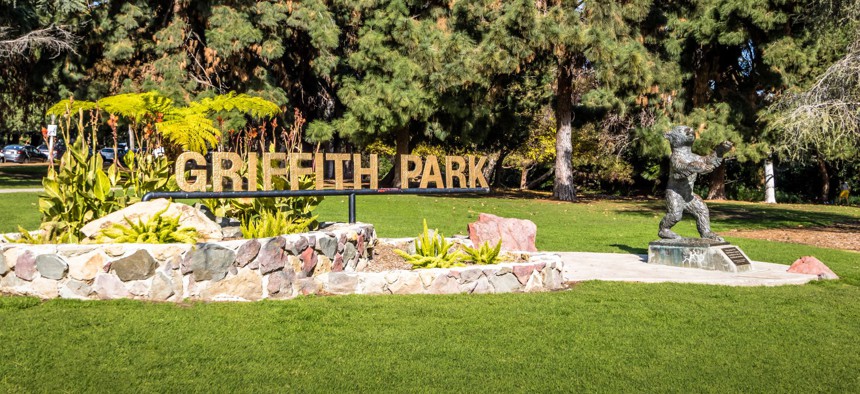Why Trees Are L.A.'s 'Water-Saving Heroes'

Griffith Park, Los Angeles Shutterstock

Connecting state and local government leaders
"There's this assumption that we need abundant irrigation to support trees," according to researchers. "But we can drastically reduce water use and still have trees."
The city of Los Angeles can lose about 100 gallons of water per person per day through “evapotranspiration,” a measure that factors in the evaporation of water from soil and the release of water vapor—called transpiration—from plants. That’s according to a recently released study from the University of Utah published in Water Resources Research.
Lawns accounted for 70 percent of the evapotranspiration with 30 percent from trees. The analysis looked at data collected during summer 2010, four years before the city instituted mandatory water usage cutbacks.
As the six-year drought persisted into 2016, California authorities toughened conservation mandates statewide. In early May, the California Water Resources Control Board voted to ease back on restrictions.
While the University of Utah research showed that lawn watering led to the greatest share of evapotranspiration in Los Angeles, it also found that trees were “the water-saving heroes of the study.”
"It's surprising that we can maintain the tree canopy of L.A. with relatively little water," one of the researchers, Diane Pataki, said in an announcement. "There's this assumption that we need abundant irrigation to support trees. But we can drastically reduce water use and still have trees."
According to the National Science Foundation:
"California's recent drought highlights the need for urban water conservation," says Tom Torgersen, program director in the Division of Earth Sciences in NSF's Geosciences Directorate, which funded the research. NSF's directorates for Biological Sciences and Social, Behavioral and Economic Sciences also funded the research.
Torgersen says that for Los Angeles, the greatest [evapotranspirtation] was due to turf grass and seed-producing trees. Palm trees made very small contributions.
"Both provide an alleviation of the urban heat island effect and reduce the need for air conditioning," Torgersen says. "However, the benefit is not evenly shared. The higher the median income, the greater the local [evapotranspirtation], with cooler temperatures in wealthier areas and higher temperatures in poorer sections of the city."

NEXT STORY: Portland Mayor Calls on Feds to Revoke 'Trump Free Speech Rally' Permit




